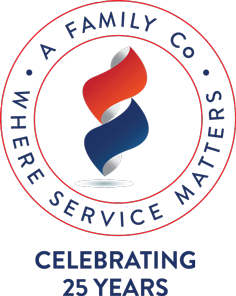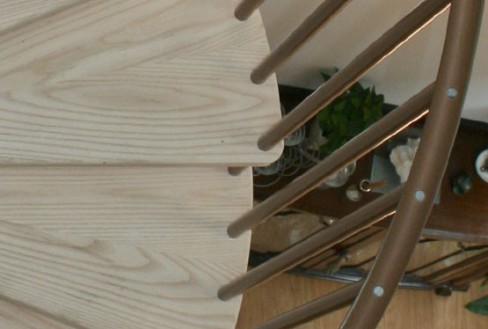When you start looking to purchase a staircase, you’ll quickly become aware of a whole new world of weird and wonderful terms. To help you to make sense of it all, we’ve collected the most common terminology together in this glossary.

Types of Staircase
Straight — The most common type of stairs. They rise in a single direction.
Combination — Introduce a 90 degree turn in a straight staircase. These staircases use spiral treads to create the turn.
Kited/Winder — Also have a 90 degree turn but with flat edge treads which follow the lines of a wall.
Spiral Stairs — The treads on these stairs rotate upwards around a central post. The outer edge of the treads is curved to create a circular outer diameter.
Squarial — An adapted version of the spiral staircase with flat edge treads which follow the lines of the walls.
Helical/Curved — Do not pivot around a central post but ‘sweep’ in an elegant curve.
Parts of Staircase
Baluster/Spindle – decorative or plain vertical shafts which help to support the handrail and close the gap between it and the baserail/tread for safety.
Balustrading – The name for the full construction of spindles, newel post, cap, baserail and handrail to form a guarding.
Base Plate — The fixing at the bottom of the centre post of a spiral or squarial staircase which secures it to the ground.
Baserail — The bottom flat steel section on which spindles can be fixed too. It is usually only used on balustrade sections that are used as guarding but depending on the shape and construction of the stairs can be used on the rake of the staircase also.
Cap/Finial — Decorative top piece for the newel post.
Handrail — The railing which sits on top of the spindles and can be used as a support by staircase users.
Nosing — The leading edge of a tread that protrudes out.
Centre pole — The central pillar in a spiral or squarial staircase which supports all of the treads.
Newel Post — A square or round post which is used to support the handrails at the top and bottom of the staircase and also where there is a change in direction of balustrading. On long runs of balustrade it acts as a support to strengthen the balustrading.
Riser — The vertical facing between treads. This can either fully or partially fill the space between the treads.
Step — the name for the combination of tread and riser.
String/Stringer — This covers the sides of the treads and structurally supports them on straight, combination, kited and helical staircases.
Tread — The top surface of the step where you stand.
Measurements for a Staircase
Rise— The measurement from the top of one tread to the top of the one above it.
Headroom — The height measurement from the nosing to the ceiling.
Flight — The stairway from one floor to the next.
Going — The depth of a tread minus any overlap from the nosing of the tread above it. On a straight staircase this is typically taken from the centre of the tread. For tapered treads, inner and outer goings are also measured at a 270 mm distance from the edge of the tread.
Pitch Line — A notional diagonal line from the nosing of one tread to the nosing of the next.
Pitch — The angle between the pitch line and the horizontal.







